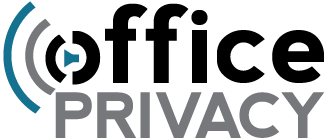Clients are often confused between the terms Sound proofing and Sound masking, and sometimes have a hard time differentiating between them.
Sound Masking
Sound masking is the addition of natural or artificial sound (such as white noise or pink noise) into an environment to cover up unwanted sound by using auditory masking. This is in contrast to the technique of active noise control. Sound masking reduces or eliminates awareness of pre-existing sounds in a given area and can make a work environment more comfortable, while creating speech privacy so workers can better concentrate and be more productive. Sound masking can also be used in the outdoors to restore a more natural ambient environment.
Sound masking can be explained by analogy with light. Imagine a dark room where someone is turning a flashlight on and off. The light is very obvious and distracting. Now imagine that the room lights are turned on. The flashlight is still being turned on and off, but is no longer noticeable because it has been "masked". Sound masking is a similar process of covering a distracting sound with a more soothing or less intrusive sound.
Sound Proofing
Soundproofing is any means of reducing the sound pressure with respect to a specified sound source and receptor. There are several basic approaches to reducing sound: increasing the distance between source and receiver, using noise barriers to reflect or absorb the energy of the sound waves, using damping structures such as sound baffles, or using active anti-noise sound generators.
Two distinct soundproofing problems may need to be considered when designing acoustic treatments - to improve the sound within a room, and reduce sound leakage to/from adjacent rooms or outdoors. Acoustic quieting, noise mitigation, and noise control can be used to limit unwanted noise. Soundproofing can suppress unwanted indirect sound waves such as reflections that cause echoes and resonances that cause reverberation. Soundproofing can reduce the transmission of unwanted direct sound waves from the source to an involuntary listener through the use of distance and intervening objects in the sound path.
Where Office Privacy can help
We sell Sound Masking products such as the Qt™Pro system which is a direct-field solution developed by Cambridge Sound Management. Compared to other acoustic treatments, Qt™ systems provide these benefits:
Reduces the need for sound absorptive and blocking materials, reducing construction costs.
Gives users the flexibility to:
- Use short partitions or fewer walls (i.e., less blocking materials) to create an open, collaborative environment.
- Build out fewer private offices maximizing existing office space.
- Increase daylight and outdoor views for workers, helping companies fulfill their LEED indoor environmental quality requirements without sacrificing worker comfort or privacy.
